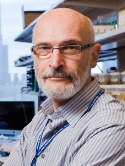| Abstract: |
Regulatory T (Treg) cells, characterized by expression of the transcription factor forkhead box P3 (Foxp3), maintain immune homeostasis by suppressing self-destructive immune responses. Foxp3 operates as a late-acting differentiation factor controlling Treg cell homeostasis and function, whereas the early Treg-cell-lineage commitment is regulated by the Akt kinase and the forkhead box O (Foxo) family of transcription factors. However, whether Foxo proteins act beyond the Treg-cell- commitment stage to control Treg cell homeostasis and function remains largely unexplored. Here we show that Foxo1 is a pivotal regulator of Treg cell function. Treg cells express high amounts of Foxo1 and display reduced T-cell-receptor-induced Akt activation, Foxo1 phosphorylation and Foxo1 nuclear exclusion. Mice with Treg-cell- specific deletion of Foxo1 develop a fatal inflammatory disorder similar in severity to that seen in Foxp3-deficient mice, but without the loss of T reg cells. Genome-wide analysis of Foxo1 binding sites reveals ∼300 Foxo1-bound target genes, including the pro-inflammatory cytokine Ifng, that do not seem to be directly regulated by Foxp3. These findings show that the evolutionarily ancient Akt-Foxo1 signalling module controls a novel genetic program indispensable for Treg cell function. © 2012 Macmillan Publishers Limited. All rights reserved. |
| Keywords: |
signal transduction; protein kinase b; controlled study; protein phosphorylation; nonhuman; transcription factor foxp3; cd8+ t lymphocyte; forkhead transcription factors; mouse; animals; mice; mus; immune system; gene expression; animal experiment; inflammation; protein binding; transcription, genetic; enzyme activation; enzyme activity; mice, inbred c57bl; cell lineage; evolutionary biology; gene expression regulation; lymphocyte differentiation; t lymphocyte receptor; regulatory t lymphocyte; immune tolerance; immune response; gamma interferon; receptors, antigen, t-cell; t-lymphocytes, regulatory; proto-oncogene proteins c-akt; genome; binding sites; cell nucleus; interferon-gamma; cytotoxic t lymphocyte antigen 4; cytokine release; homeostasis; interleukin 2 receptor alpha; transcription factor fkhr
|













